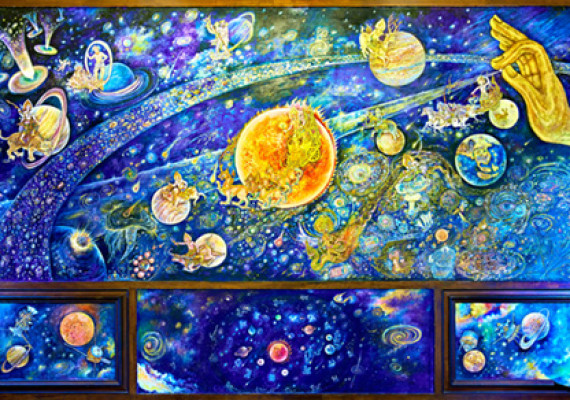At this blog post i will continue to show my impressions, feelings and thoughts about Thailand (first part of this post you can read here). My thoughs about Laos you can read at this post. As its usual for me, this photos are reflection of those spiritual, historical and cultural layers, which I see and feel. So, the main aim for me during creation of such photos – try to reflect those things, that show THROUGH materiality of our world. With every photos i’m giving my comments, that will help to understand the photo.
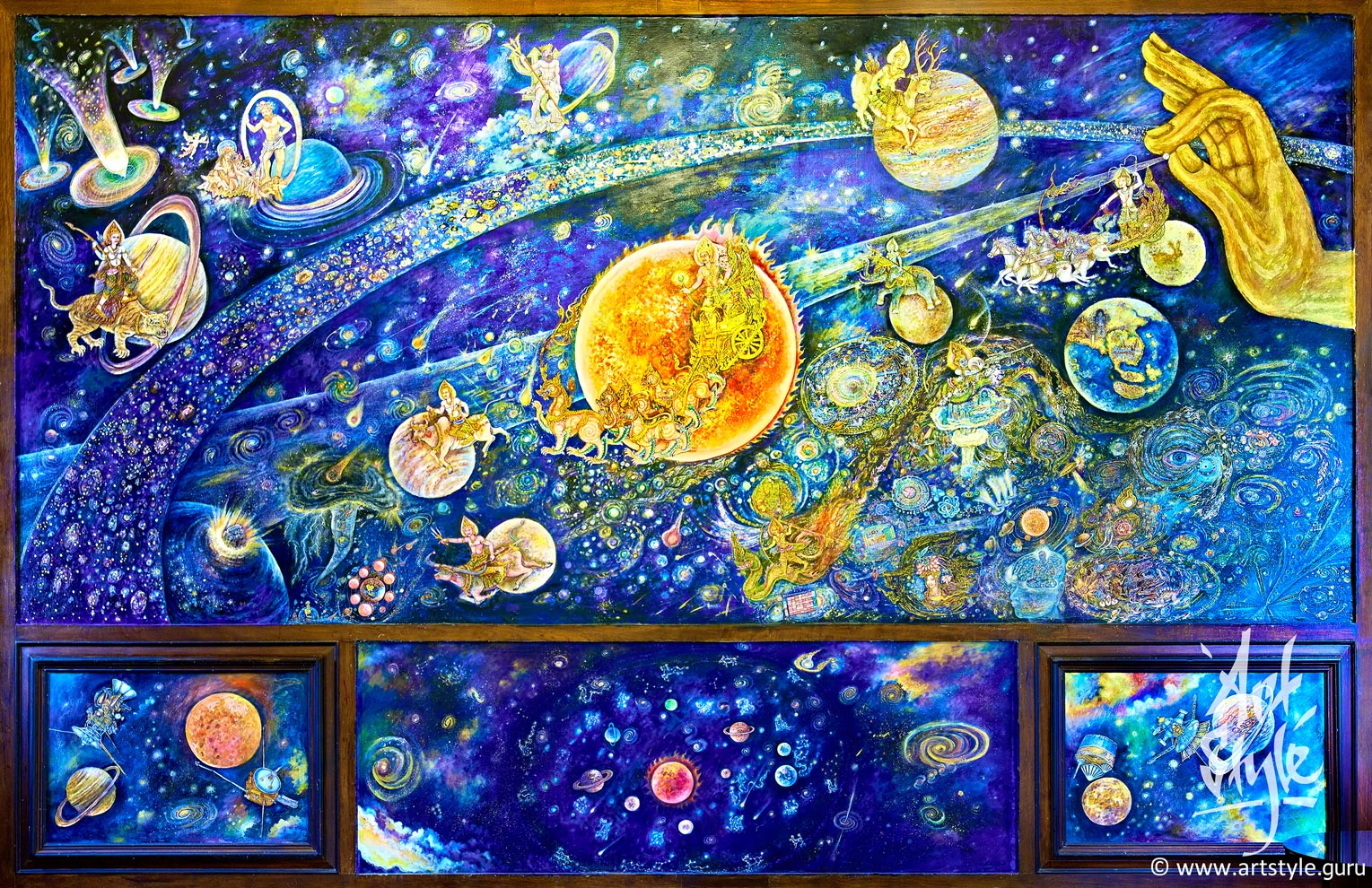
Picture that reflects modern thai pantheism. Wat Saket (The Golden Mount), Bangkok, Thailand. It is the belief that the universe (or nature as the totality of everything) is identical with divinity, or that everything composes an all-encompassing, immanent God. This idea is shared by hinduism (concept of Brahman), classic daoism, sufism (mystical dimension of Islam) and modern european religious philosophy.
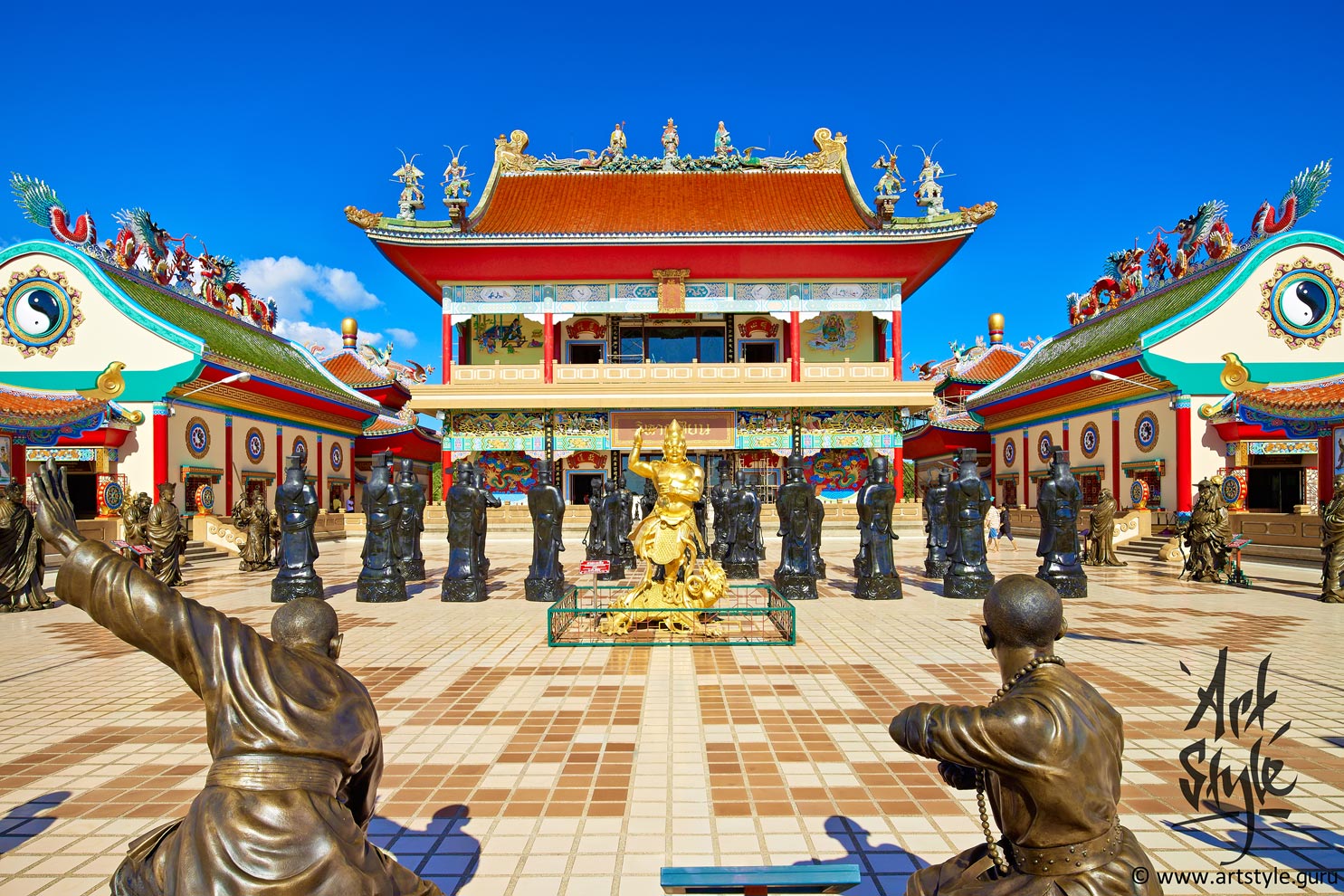
China-thai temple-museum Vihan Sian, Wat Yansangwararam, Pattaya districts, Thailand. The floor shown in the picture is dedicated to Taoism. A recurrent and important element of Taoism are rituals, exercises and substances aiming at aligning oneself spiritually with cosmic forces, at undertaking ecstatic spiritual journeys, or at improving physical health and thereby extending one’s life, ideally to the point of immortality. A number of martial arts traditions embody Taoist principles to a significant extent, and some practitioners consider their art a means of practicing Taoism.
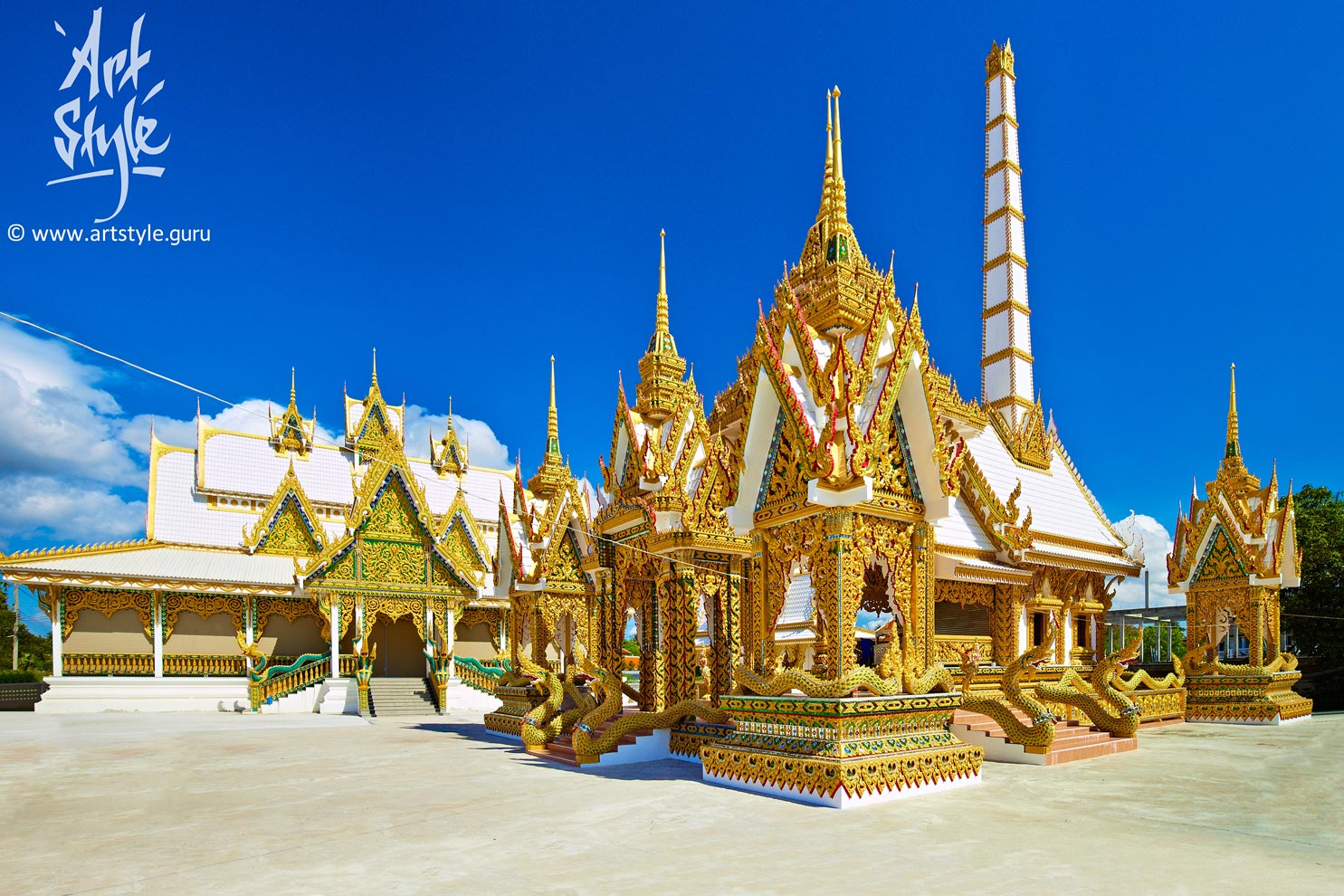
Wat Tungklom and its crematorium, Pattaya districts, Thailand. Funeral rites are the most elaborate of all the life-cycle ceremonies and the ones entered into most fully by the monks. Thai people rely upon monks to chant the sutras that will benefit the deceased, and to conduct all funeral rites and memorial services. To conduct the rites for the dead may be considered the one indispensable service rendered the community by the monks. For this reason the crematory in each large temple has no rival in secular society.
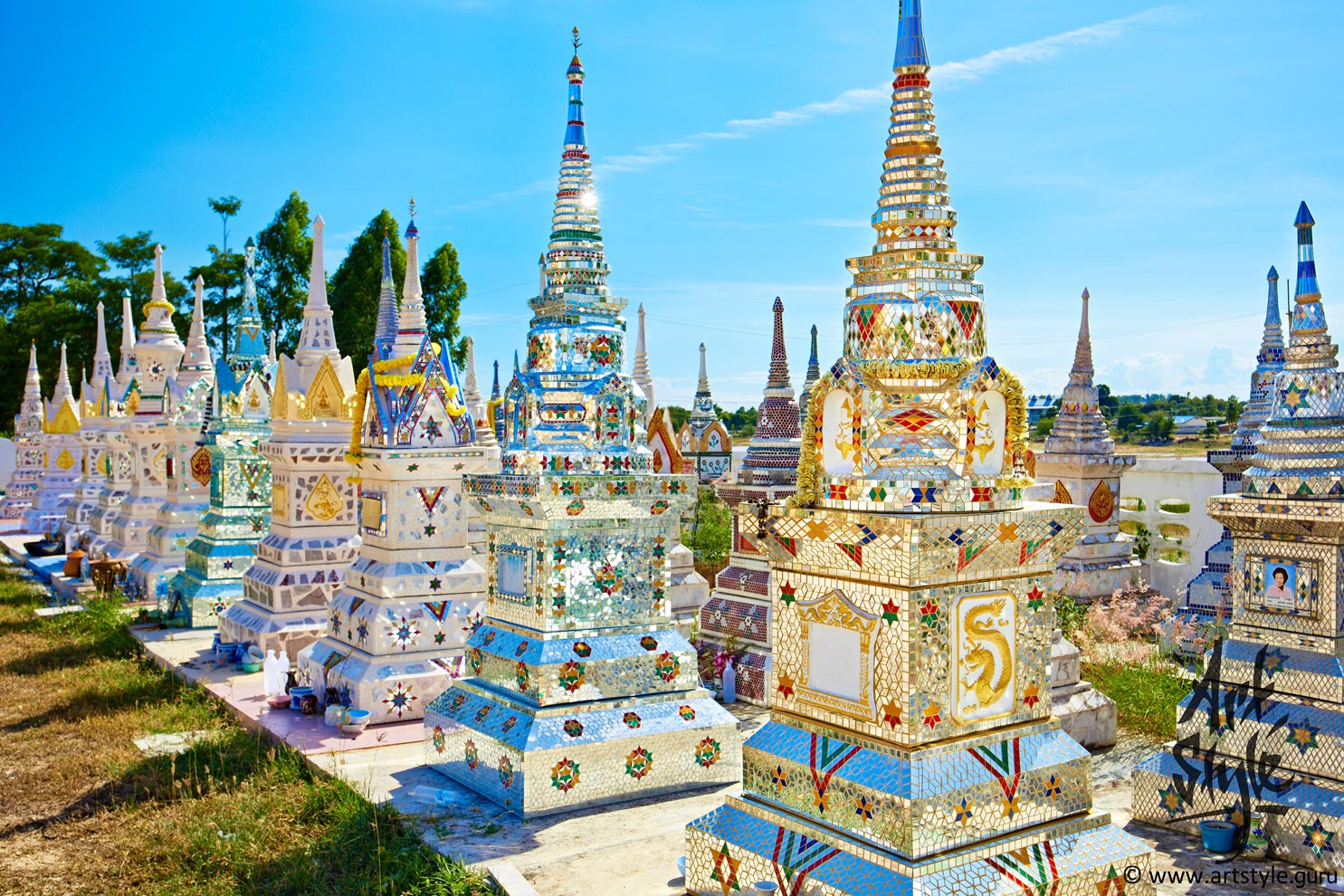
Сolumbarium of Wat Tungklom, Pattaya districts, Thailand. A columbarium is a place for the respectful and usually public storage of cinerary urns (i.e. urns holding a deceased’s cremated remains). In Buddhism, ashes of the deceased may be placed in a columbarium, which can be either attached to or a part of a Buddhist temple or cemetery. This practice allows for the family of the deceased to visit the temple for the conduct of traditional memorials and ancestor rites.
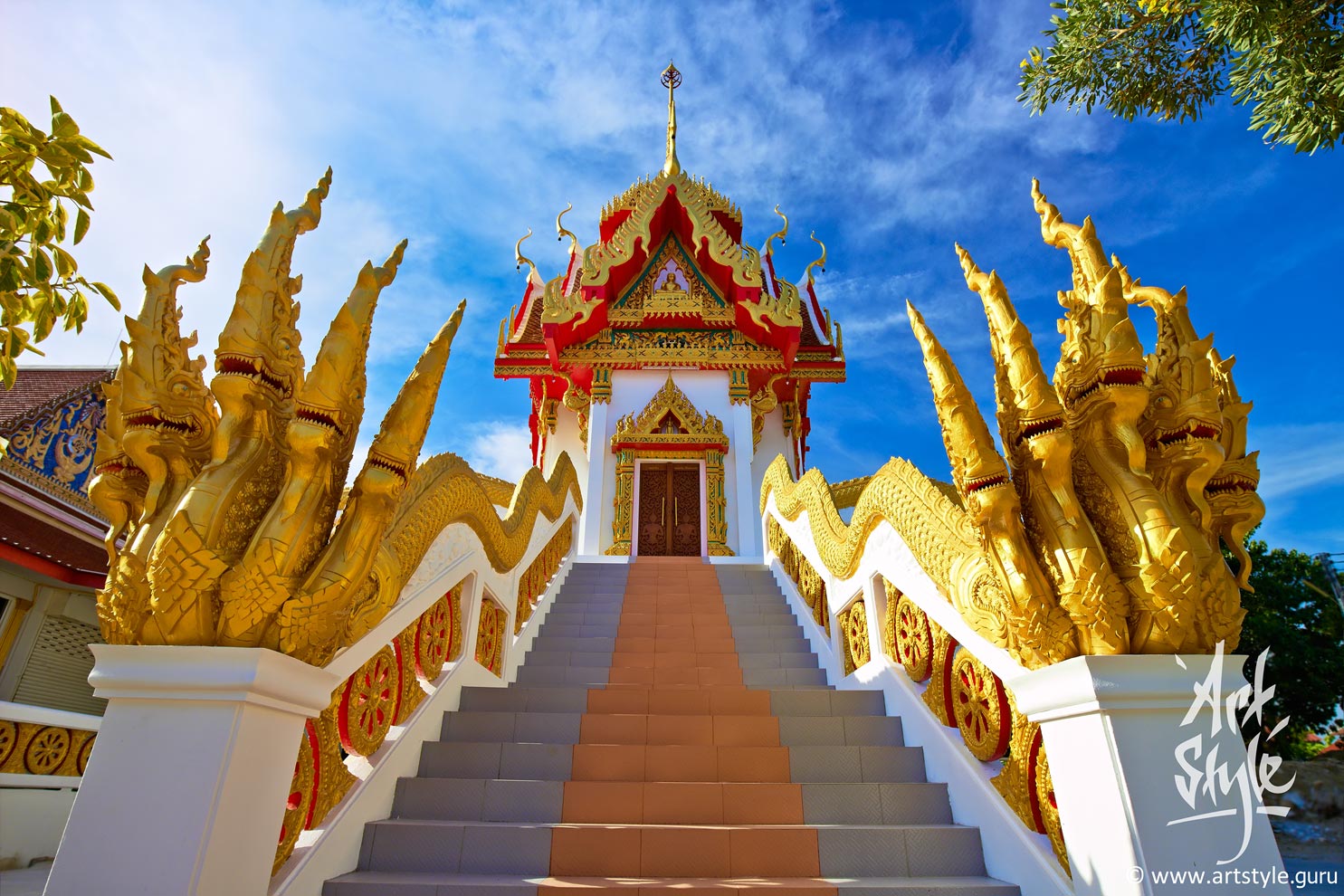
Sanctuary of Wat Nong Yai, Pattaya, Thailand. Snakes are the guardians here. They also symbolize temptation and wisdom, which achieved after temptation will be overcome.
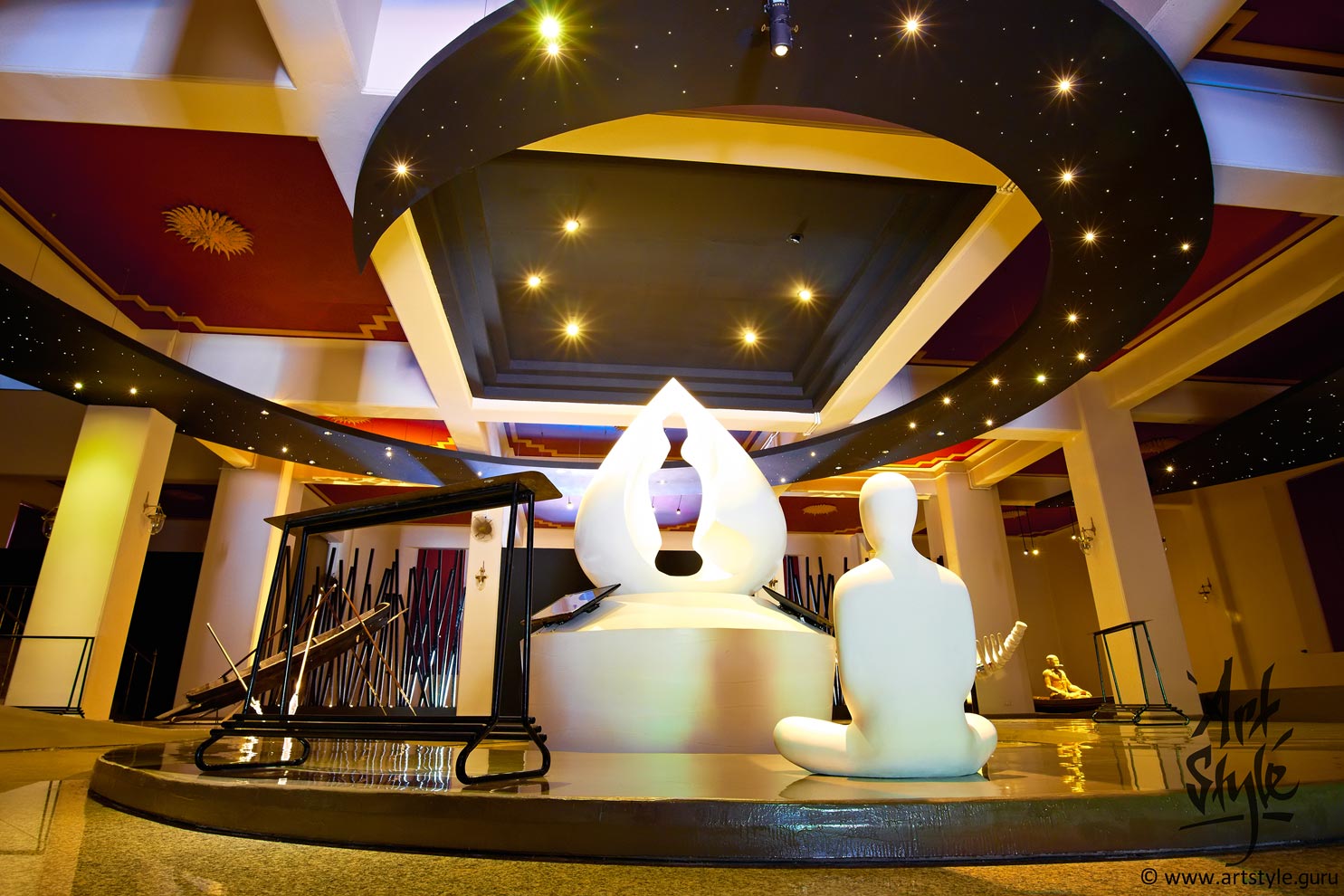
Inside temple-museum Mahabodhi, Wat Yansangwararam, Pattaya districts, Thailand. Mahabodhi literally means “Great Awakening”.
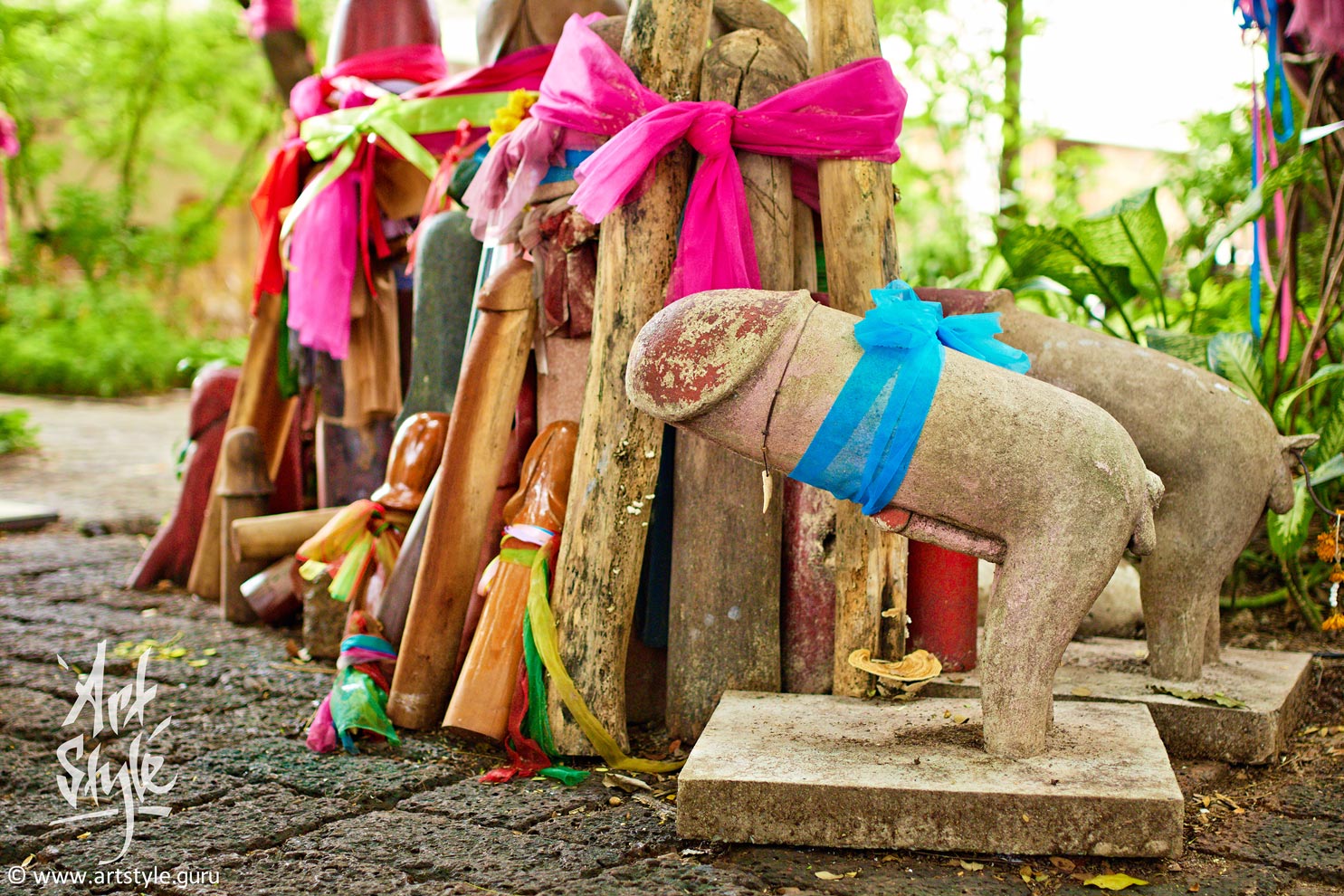
Chao Mae Tuptim shrine (also known as Penis Shrine), Bangkok, Thailand. In Thailand, the phallus is considered to be a symbol of good luck and also a representative of fertility. Penis statues are said to possess special cosmic powers and endow good fortune and fertility on anybody coming into contact with them. The shrine is named after Chao Mae Tuptim, a pre-Buddhist Southeast Asian tree spirit, who is said to bestow blessings on those who worship her at the shrine. Women hoping to get pregnant leave offerings at the spirit house, flanking a 3.0m penis statue draped in cloth, including candles, jasmine, lotus flowers and Chinese incense sticks.
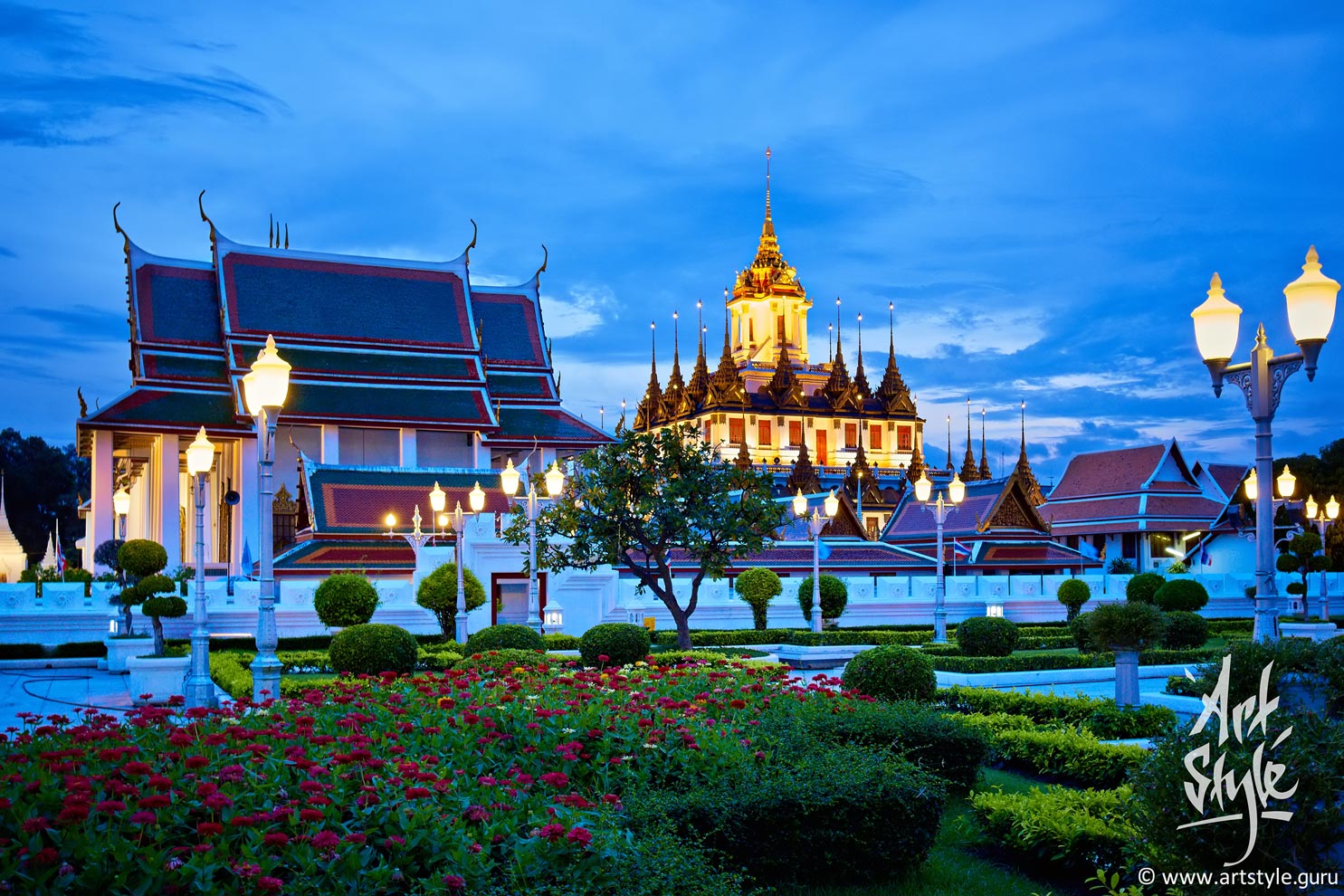
Loha Prasat, Wat Ratchanaddaram, Bangkok. Loha Prasat – a multi-tiered structure 36 m high and having 37 metal spires, signifying the 37 virtues toward enlightenment. It is the only one metal sacred builnding in Bangkok.
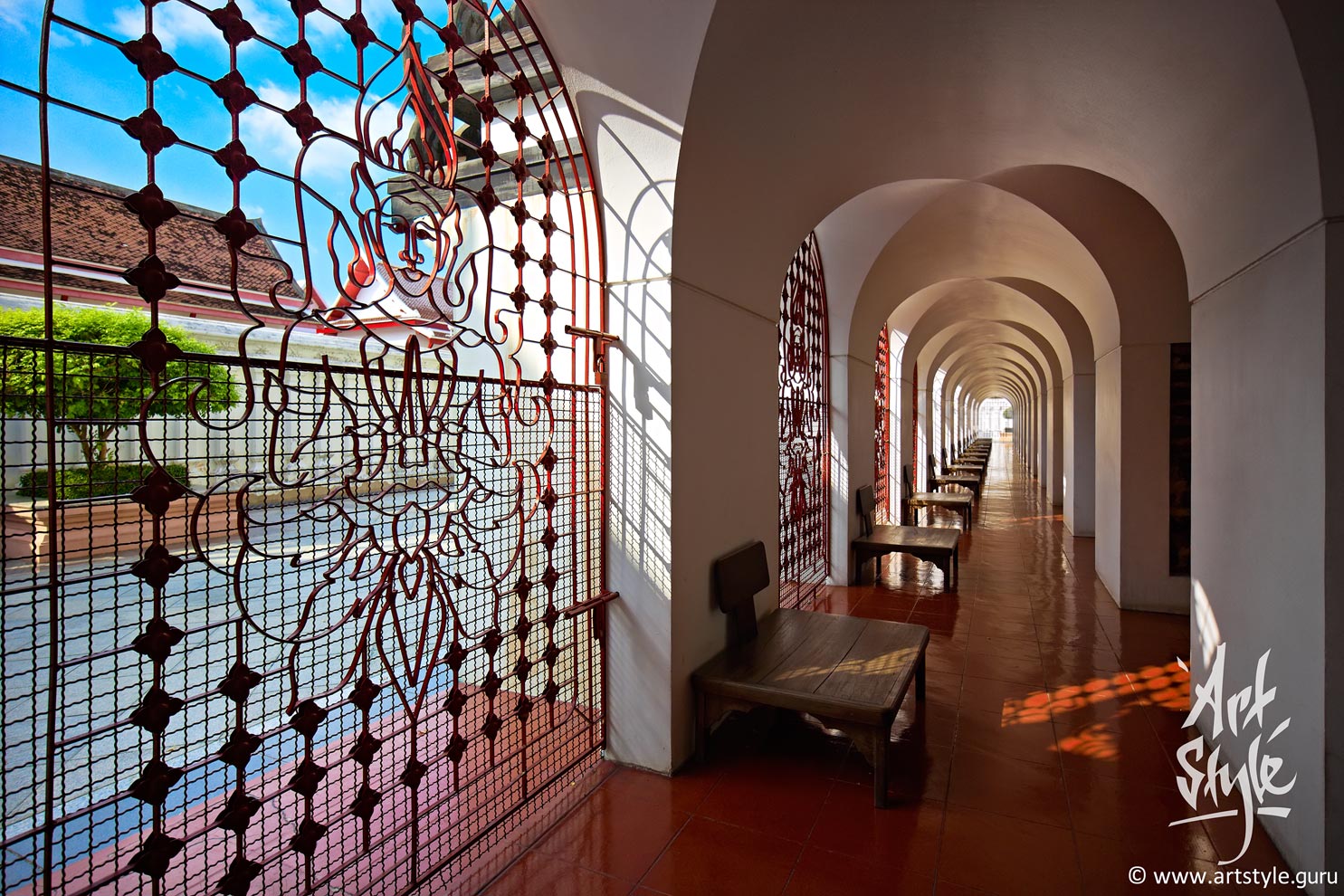
Maze of Loha Prasat, Wat Ratchanaddaram, Bangkok, Thailand. This maze at basic floor represents maze of human mind, in which spirit must find his way to balance and enlightment.
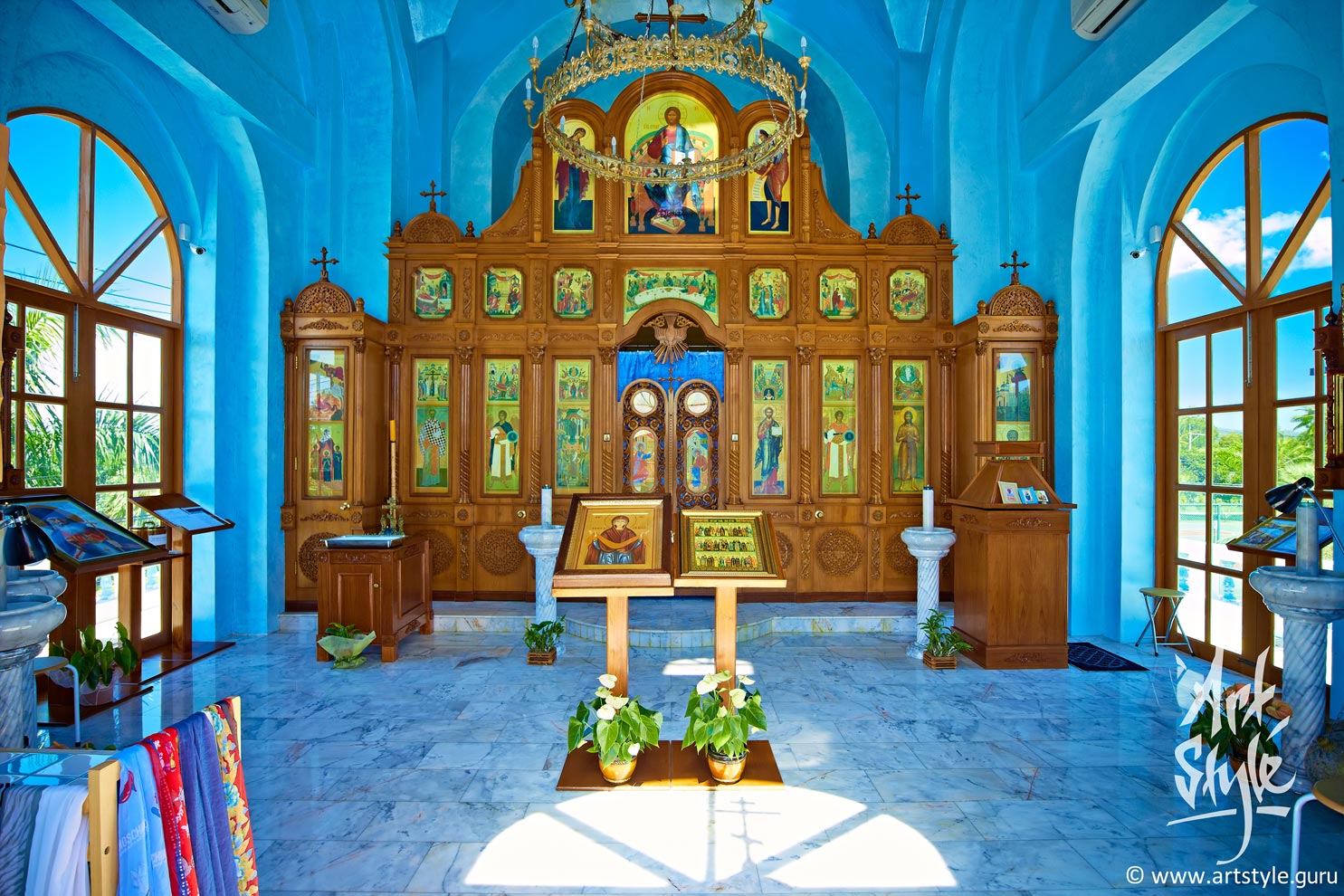
Orthodox church of the Protection of Mother of God, Pattaya, Thailand. Assigned meanings to the colors are: white for the pure light of God’s energy; blue for the Mother of God and gold for the richness of the gifts of the Holy Spirit.
To be continued…




